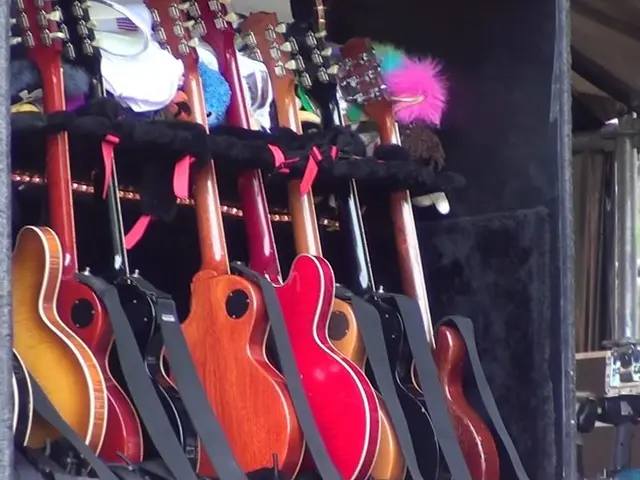In 2025, Russia intends to manufacture approximately 79,000 martyrs or individuals willing to die for a cause.
In a significant move, the Russian Federation is significantly scaling up the production of Shahed-type strike drones, aiming to build around 79,000 units by 2025. This expansion is being facilitated by the opening of new production lines, the substitution of imported parts with domestically or allied-sourced components, and the localization of key components like the glider and internal combustion engines [1][2][5].
Russia's primary assembly plant at the Alabuga Special Economic Zone in Tatarstan is operating at scale, with Russia also building worker dormitories adjacent to these production sites [3]. The Russian-built Geran-2 version, based on the Iranian Shahed-136 design, is also being mass-produced in these factories [1][2].
These drones have been deployed extensively in attacks on Ukrainian cities and infrastructure, with record launch numbers, such as over 6,100 Shahed drones launched in July 2025 alone [1][4]. In response, Ukraine is actively conducting strikes on these production and storage facilities to disrupt Russia's drone manufacturing and supply chain.
Ukraine's military intelligence is employing various means related to acts of sabotage and disruption of production to counter the increase in Russian unmanned aerial vehicle production. This includes precision strikes targeting manufacturing plants and storage units, as well as intelligence operations to monitor production scale and deployment patterns, supporting targeted operations [1][3].
The goal of Ukraine's countermeasures is to prevent Russia from reaching its ambitious production goals by destroying manufacturing infrastructure and supply caches. Notable strikes on the Alabuga plant have occurred on August 9 and August 12, 2025 [1][3].
Meanwhile, Ukraine's military intelligence uses NATO standards for defining targets and tasks for destruction, including both kinetic and non-kinetic strikes. The navigation system for the Russian unmanned aerial vehicles, excluding chips and microelectronics, is of Russian production. The Russian antennas for their unmanned aerial vehicles are of the 'Komet' type [1].
The Russian Federation is also producing its own internal combustion engines for its unmanned aerial vehicles. The production plan includes 40,000 units of 'Geranium-2', 5,700 units of 'Harpyia-1', and around 34,000 units of 'Gerbera' and other decoy targets, but no details about the capabilities or specific uses of these drones have been provided [1][5].
Vadim Skibitskiy, Deputy Chief of the Main Intelligence Directorate of the Ministry of Defense, stated these figures in an interview with "Suspilne" [2]. The production rates of various types of unmanned aerial vehicles are increasing, but no information was given about the timeline or pace at which the replacement of imported components is taking place [1].
Ukraine's goal is to warn about the increase in Russian unmanned aerial vehicle production and, if possible, destroy the production facilities. The ongoing campaigns aimed at reducing the volume and intensity of drone attacks by disrupting Russia’s 'drone war' escalation plans [3].
Technology plays a crucial role in the ongoing conflict, as Russia is heavily relying on locally produced technology for the Shahed-type strike drones, with over 40,000 units of internal combustion engines being produced for these unmanned aerial vehicles.
In contrast, Ukraine is employing technology to counter these drones, with strikes targeting manufacturing plants and storage units being a part of their strategy to disrupt Russia's drone manufacturing and supply chain.




